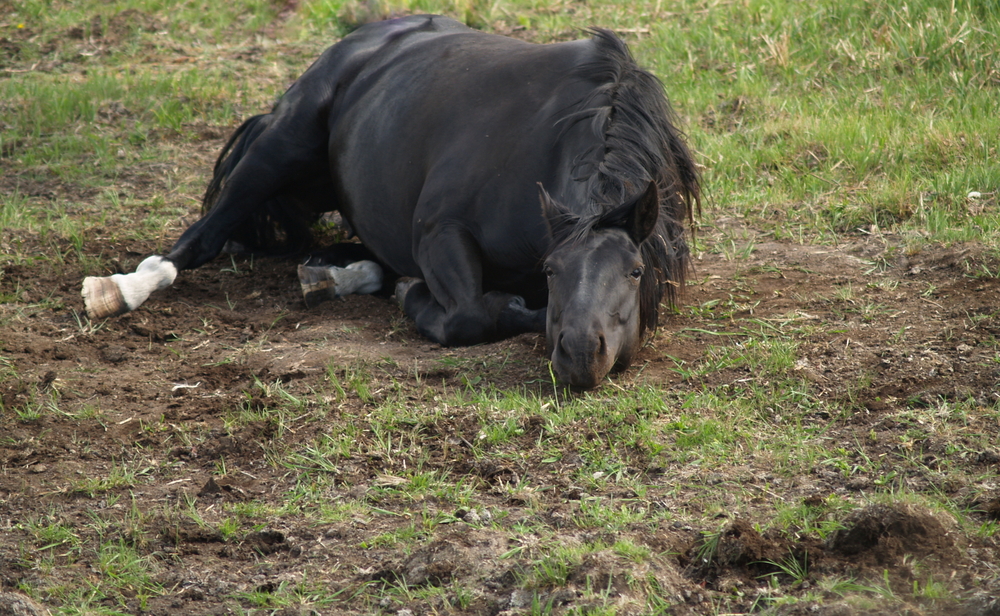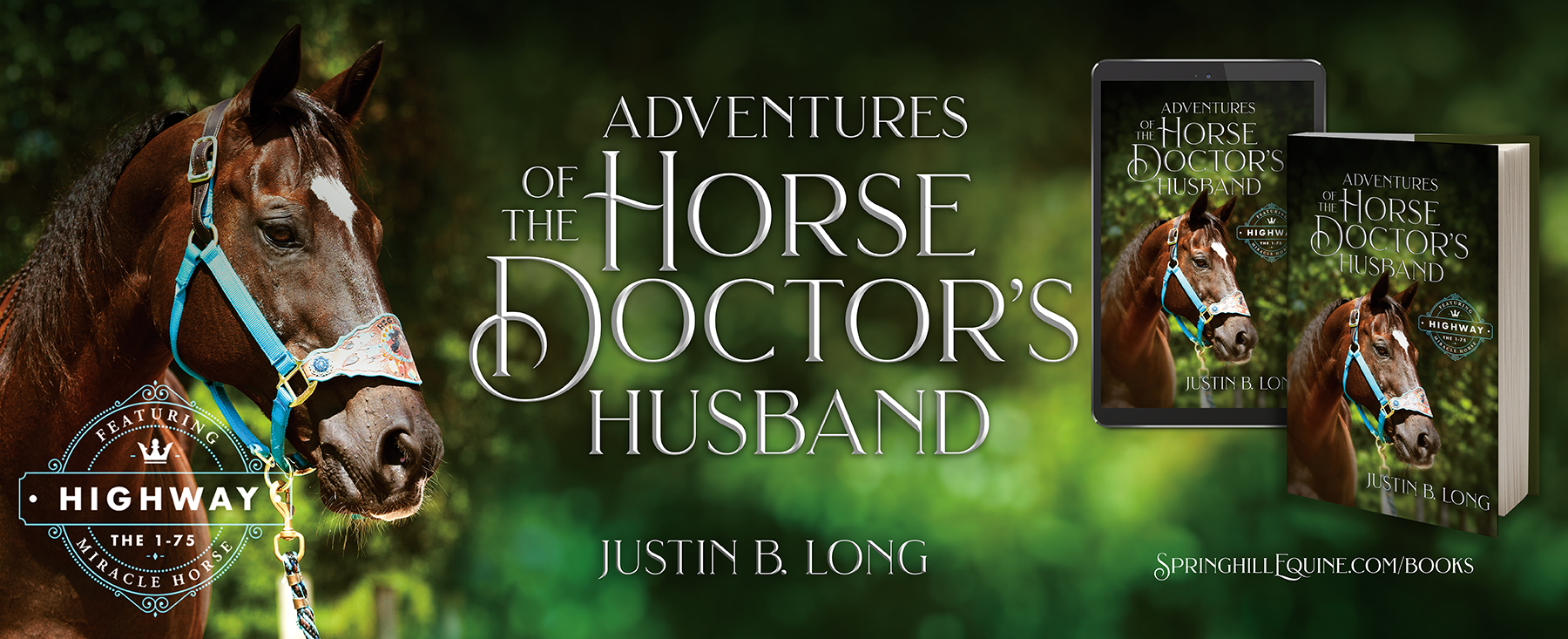Tuesdays with Tony
How to Help Your Vet Manage a Colic – Part 1
I see a lot of stuff as the Springhill Equine Clinic cat and it seems to me there are few things that strike more fear into the heart of a horse owner than colic. Colic is a catch-all term for abdominal pain and can be caused by a variety of different things in your horse’s belly, ranging from a mild gas colic to a serious strangulating lesion that requires surgery. I’m not sure why horses don’t just puke on the carpet like I do whenever they start to feel colicy, but my docs say that’s not how it works. Colic will never be a fun time, but here are some ways to help your horse (and my docs!) so things go as smoothly as possible.
Be prepared
- Know how to recognize the signs of colic – Rolling, pawing, looking at the flank, and laying down are the most common signs, but horses can also show more subtle signs such as not wanting to eat, kicking at the stomach, restlessness, stretching out as if to urinate, increased respiratory rate, and reduced manure production. If you notice any of these things, give my doc a heads up so she can advise you what to do next.
- Call your vet! Even if you aren’t sure she needs to come out yet, it’s best to discuss what’s going on. If you wait too long it could turn a mild problem into a severe one. Generally, colic is much more easily (and economically) treated if you can catch it early. A severe colic may have no chance of survival if you don’t pursue treatment immediately.
- It’s very useful to know how to take your horse’s vital signs – things like his heart rate and temperature. Get yourself an inexpensive stethoscope and learn how to listen to his heart and gut sounds. You can find one for as little as $20! Practice ahead of time, don’t wait for an emergency to happen. My doc can show you how to use it! When you call your vet, it’s very helpful to tell her what the heart rate is – it helps to determine how serious the colic is. A horse’s normal heart rate is around 26-46 beats per minute (much slower than yours, and waaay slower than my thrillingly fast kitty heartrate of 170 beats per minute!) You can hear it best on the left side, just behind his elbow, about where the girth rests. You may find it useful to listen to some sample audio ahead of time. A high heart rate is often a sign of a more serious colic. His gut sounds can be heard on both sides of his belly, high and low, in front of his hips. A normal horse has active rumbles all over his belly, and you shouldn’t have to listen for much longer than 15 seconds to hear some. Again, practice ahead of time to get used to his normal. Keep a thermometer around too. This is another useful piece of information to give my doc. Practicing ahead of time will also help you keep track of what your horse’s normal temperature is, so you’ll be more likely to notice a problem. Normal temperature is usually between 98.5 – 100.5 degrees F.
- Have a well-lit area available for my doc to examine your horse. It should be a safe place to work and free of obstructions. Have a clean water source available in case she needs to pass a nasogastric tube into your horse’s stomach. It helps to have a power source available in case she has to ultrasound your horse’s abdomen. Also, this feline thinks you ought to put the dogs away so there are less slobbery distractions.
- Have a transport plan. If your horse needs to get to the hospital for surgery or medical treatment, who is going to trailer him there? If you have a trailer, can it be hooked up quickly and ready to go? Are the tires good? You don’t want to have to worry about these things when the colic is happening.
- Consider a major medical insurance policy for your horse. Colic surgery can be very expensive, often around the mid to high 4 figures in our area. Insurance can be surprisingly affordable, especially compared to the cost of treating a colic. It’s a very sad thing to have a euthanize a horse that could have been treated. When your horse is sick, the financial part is the last thing you’ll want to have to worry about. There are also colic programs from companies like Platinum Performance and SmartPak that will cover a significant chunk of the surgery cost if your horse is enrolled.
- Be familiar with the idea of colic surgery. While hopefully you never have to use this option, you should have an understanding of colic surgery and make sure you don’t have any misconceptions. Decades and decades ago, colic surgery was less common than it is now. Some people still have the idea that colic surgery doesn’t have a great success rate. But the truth is, the survival rate for colic surgery is about 90%. Another misconception is that older horses can’t handle surgery well. Studies have shown that postoperative survival rates for older horses are about the same as younger horses.

While you’re waiting for the vet
- If it’s safe to, take your horse for a walk. Walking can help to improve the activity of your horse’s intestines. But you don’t need to walk for hours and hours at a time, that can do more harm than good. It’s ok to let him rest calmly, laying down isn’t going to cause a twisted gut – that’s an old wives’ tale. If your horse is rolling violently and you can’t keep him up, your own safety is the priority, so it may be best to put him in a safe place and stay back until the vet arrives.
- Take away his food until after my doc has examined him. This includes grass too. It’s ok to leave him water, though a colicky horse usually won’t be interested in drinking.
- Keep an eye out for manure. The amount of manure your horse has passed, and whether it’s a normal consistency, are useful pieces of information for my doc. If possible, collect some of the manure for her to inspect, as it might offer a clue about the cause of the colic. Keep in mind though, a common misconception is that if a horse is passing manure, the colic has to be getting better. That’s not always the case, since there are about 100 feet of gut inside your horse. The manure could be further back than the site of the problem.
- Think about possible causes. Do you have a new batch of hay? Has your pasture changed recently? Anything else different in your horse’s lifestyle?
- Give my doc good driving instructions or an accurate GPS address to find your barn. The importance of well-marked street numbers visible from the road can’t be overstated! Keep your phone close in case she needs to contact you. If the house might be hard to find, especially at night, get someone to stand by the driveway or meet at a landmark to help direct her to where your horse is.
Until next week,
~Tony
P.S. Scroll down to click on to Part 2 of this blog!
P.P.S. If you haven’t subscribed to this blog yet, this is the best opportunity you’ll have all day. Just scroll down another inch or two and look for the big purple box. If you subscribe, I’ll email you a link to the newest blog every Monday. That’s right, early access! I know how to incentivize you humans. And under the purple box is a link to some pretty popular books. You might want to check those out, too. After all, I’m practically a main character in them.
Tuesdays with Tony is the official blog of Tony the Clinic Cat at Springhill Equine Veterinary Clinic in Newberry, Florida. If you liked this blog, please subscribe below, and share it with your friends on social media! For more information, please call us at (352) 472-1620, visit our website at SpringhillEquine.com, or follow us on Facebook!
[jetpack_subscription_form title="Subscribe to Whinny's Wisdoms"]

